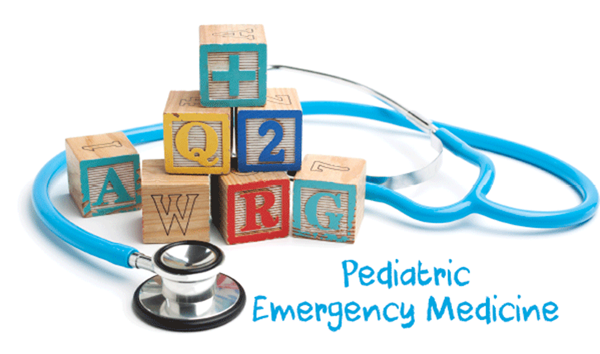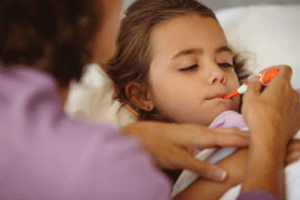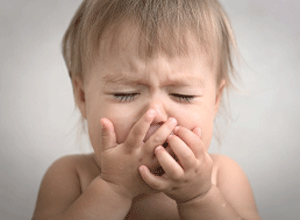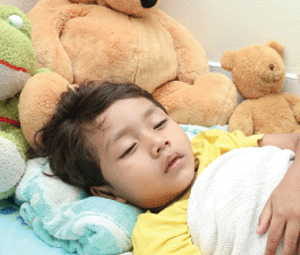Case 1
A 6-year-old female presents with 3 days of fever, nausea, and vomiting from a presumed viral gastroenteritis. On examination she is febrile to 39 degrees Celsius and her eyes are sunken. You order ibuprofen to treat her fever. What is her risk of acute kidney injury (AKI) from ibuprofen administration in this patient population?
In a 2013 retrospective chart review of 1,015 hospitalized children with AKI, Misurac et al. found that 2.7% had either NSAID-associated acute tubular necrosis or NSAID-associated acute interstitial nephritis.1 Similarly, in a 2015 prospective study of 105 hospitalized children with dehydration and acute gastroenteritis, Balestracci, et al. found that 54% of patients that received ibuprofen developed renal impairment. Exposure to ibuprofen increased the risk of AKI by more than twofold.2
Bottom line: The need to use NSAIDs to control pain and fever in children should be balanced with careful consideration of the patient's fluid status to avoid the risk of NSAID-associated AKI in the setting of dehydration.
Case 2
A 10-month-old female presents with her mother, complaining of fever, wheezing, and tachypnea worsening over the past 2 days. The patient is diagnosed with bronchiolitis. After some nasal suctioning, nebulized hypertonic saline, and acetaminophen she looks markedly better. Are there any clinical variables that may portend a higher risk of central apnea in this patient?
In a prospective study of 892 infants with diagnosed bronchiolitis in the ED, central apnea later occurred within the hospital in 5% of the infants. The authors identified six clinical variables associated with central apnea including age ‰¤6 weeks, birth weight ‰¤2.5kg, low weight-for-age, congenital heart disease, parental report of apnea, and previous history of apnea.3
Bottom line: Central apnea is a life-threatening complication of bronchiolitis. Consider these high-risk variables before discharging patients with bronchiolitis.
Case 3
A 9-year-old female presents with her mother, complaining of abdominal pain. It began as a periumbilical discomfort that has progressed to a sharp right lower quadrant pain over the past day. Her vital signs are normal, and she has moderate tenderness to the right lower quadrant without rebound or guarding. Abdominal ultrasound reveals appendicitis without evidence of abscess or rupture. Could this patient be managed non-operatively with antibiotics only?
In a 2014 randomized trial of 77 patients aged 7 to 17 years old with uncomplicated appendicitis, parents were given the option of choosing between operative and antibiotic-only management. Of the 30 children who underwent non-operative management, only 3 patients underwent appendectomy within 30 days. None had progression to rupture or gangrene.4 In a 2015 pilot study of 50 patients aged 5-15 years old with uncomplicated appendicitis, 22 of 24 patients randomized to an antibiotic-only group had initial resolution of symptoms, but 9 (38%) still underwent appendectomy within 1 year after the initial appendicitis.5
Bottom line: The data is limited on non-operative management of uncomplicated pediatric appendicitis. More research will be needed to further elucidate the efficacy of this management strategy.
Case 4
A 5-year-old presents with his father, complaining of fever, cough, and shortness of breath. On examination, he is drowsy but arousable, hypotensive, febrile, and has right-sided crackles on lung auscultation. A chest radiograph shows a right middle lobe pneumonia. Fluid resuscitation and intravenous antibiotics are initiated. The patient remains hypotensive after two fluid boluses, and you want to begin a vasopressor infusion. Which vasopressor should you choose?
Ventura et al. conducted a double-blind, prospective, randomized control trial in 2015 comparing dopamine (5-10 mcg/kg/min) and epinephrine (0.1-0.3 mcg/kg/min) in 120 children aged 1 month to 15 years old with fluid-refractory septic shock. There was a significant difference in mortality: 20.6% died in the dopamine group, while only 7% died in the epinephrine group. This yielded a survival odds ratio of 6.49 (95% CI, 1.1-37.8; p=0.037) with the use of epinephrine.6
Bottom line: Although the study had several limitations (single-center, stopped early for harm, possible subtherapeutic dopamine dosing, majority respiratory infections), it is reasonable to consider choosing epinephrine over dopamine for children with fluid-refractory septic shock.
References
- Misurac JM, Knoderer CA, Leiser JD, et al. Nonsteroidal anti-inflammatory drugs are an important cause of acute kidney injury in children. J Pediatr. 2013;162(6):1153-9.
- Balestracci A, Ezquer M, Elmo ME, et al. Ibuprofen-associated acute kidney injury in dehydrated children with acute gastroenteritis. Pediatr Nephrol. 2015;30(10):1873-1878.
- Walsh P, Cunningham P, Merchant S, et al. Derivation of Candidate Clinical Decision Rules to Identify Infants at Risk for Central Apnea. Pediatrics. 2015;136(5):e1228-36.
- Minneci PC, Sulkowski JP, Nacion KM, et al. Feasibility of a Nonoperative Management Strategy for Uncomplicated Acute Appendicitis in Children. Am Coll Surg. 2014;219(2):272-279.
- Svensson JF, Patkova B, Almström M, et al. Nonoperative treatment with antibiotics versus surgery for acute nonperforated appendicitis in children: a pilot randomized controlled trial. Ann Surg. 2015;261(1):67-71.
- Ventura AM, Shieh HH, Bousso A, et al. Double-Blind Prospective Randomized Controlled Trial of Dopamine Versus Epinephrine as First-Line Vasoactive Drugs in Pediatric Septic Shock. Crit Care Med. 2015;43(11):2292-302.







